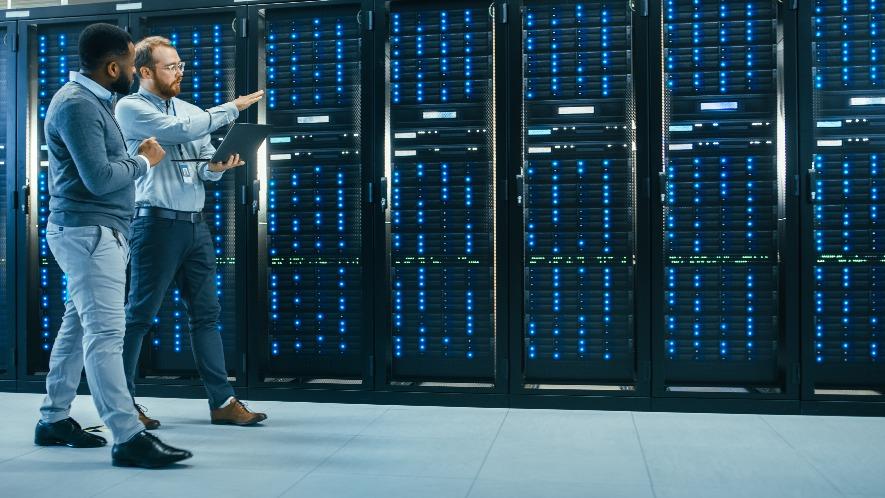{{item.title}}
{{item.text}}

{{item.text}}
AI’s rapid expansion is reshaping data centers, with the US market set to grow 17% CAGR to ~54 GW by 20291. Utilities and energy providers should adapt as AI workloads demand more computer power, transforming facility design, energy use, and sustainability.
Driven by AI and cloud migrations, hyperscale data centers — primarily owned by cloud giants — are the fastest-growing segment. As AI adoption surges, so does the demand for computing power, pushing hyperscalers to expand rapidly. Meanwhile, colocation providers benefit as hyperscalers lease capacity for AI inferencing, scaling without new builds.
“There is a lot of colocation demand, and it's not slowing down. Everything is taken pre-lease before it comes online.”
Source:Global Data Centers, HyperscalerAI workloads are putting unprecedented pressure on the power grid, with US data centers expected to more than double their electricity consumption by 20282. This surge in demand is raising concerns about grid stability, as many utilities struggle to keep pace with growing energy requirements. These bottlenecks are often caused by regulatory hurdles, aging infrastructure, and the sheer volume of requests flooding grid operators.
“The biggest problem right now is simply capacity, which translates to space and power… demand is crashing down on us.”
Source:Global Data Centers, HyperscalerRising AI complexity demands higher power densities, making traditional air cooling insufficient and driving adoption of liquid cooling. Data center operators are pioneering hybrid power solutions that can integrate renewable energy sources — like solar, wind and battery storage — to help reduce their reliance on traditional grid power while enhancing resilience against outages.
More than 36 US states now offer tax incentives for data center construction, encouraging expansion in regions with favorable regulatory environments and power solutions3. Emerging microgrid solutions and power purchase agreements (PPAs) allow data centers to reduce dependence on centralized grids, allowing facilities to operate independently of the main grid during peak demand periods, helping reduce strain on public utilities.
As data center development accelerates, operators should implement integrated governance to help manage infrastructure lifecycles. Tools like Oracle Primavera Cloud can streamline planning, budgeting and risk management, enabling real-time decision-making with centralized project visibility.
AI is not just changing the way businesses operate — it is helping reshape the very foundation of the digital economy. For utilities and data center stakeholders, collaboration, innovation, and strategic planning is often the key to helping navigate this transformation successfully.
To help stay ahead, utilities should:
Ready to take business performance to untapped levels with Oracle and AI? Learn how PwC and Oracle can help you navigate these challenges and build a future-ready data center strategy. Contact us today to start the conversation.
1. Goldman Sachs. "Generational Growth: AI, Data Centers and the Coming US Power Surge." Goldman Sachs, 2024. Statista. "Data Center - United States." Statista, 2025.
2. Data Center Dynamics. "DOE: Data Centers Consumed 4.4% of US Power in 2023, Could Hit 12% by 2028." Data Center Dynamics, 2024.
3. NAIOP. "An Overview of State Data Center-related Tax Incentives." NAIOP Development Magazine, 2024.
{{item.text}}

{{item.text}}
